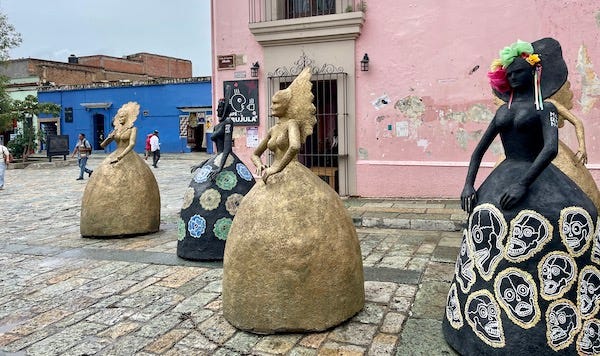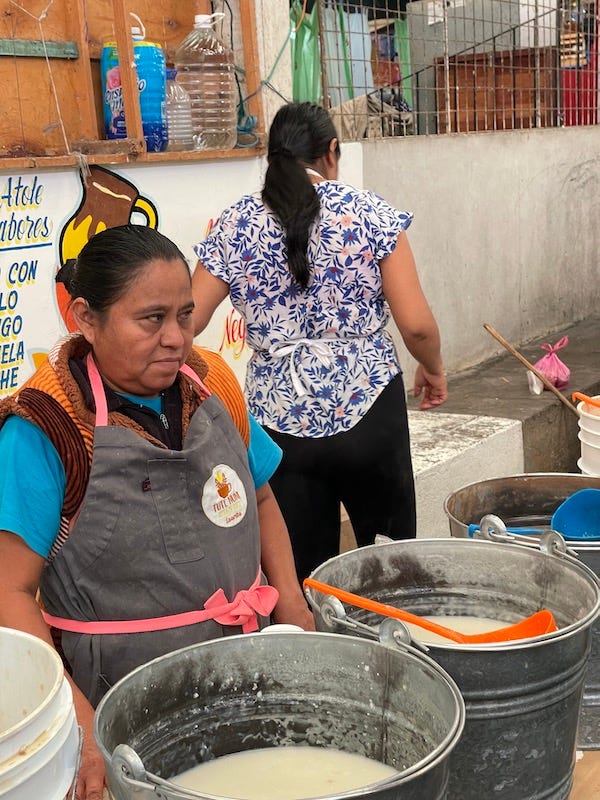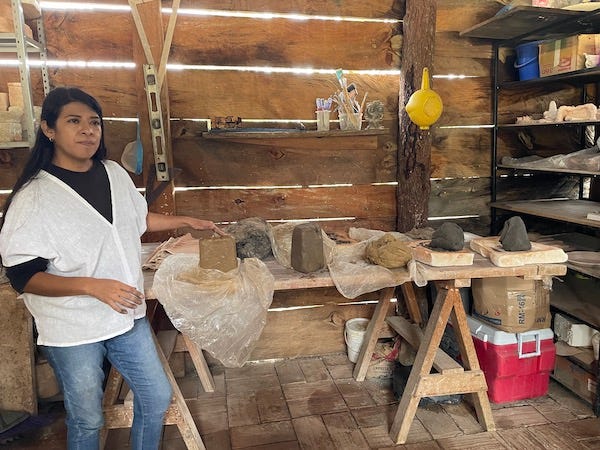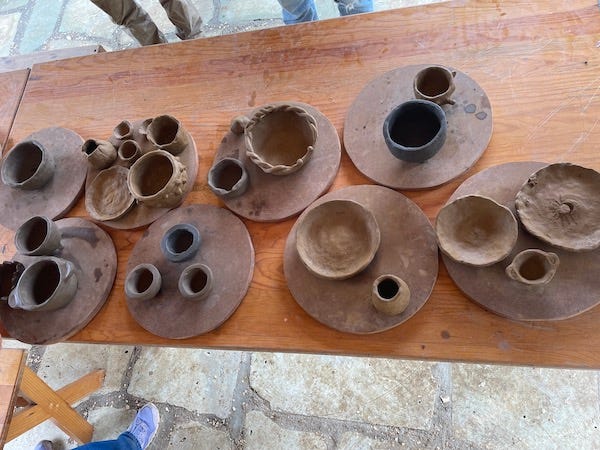I am writing to you from Oaxaca where I am attending the 6th Ferment Oaxaca event. In 2019 and 2021 Christopher and I presented at this event—4 days of delicious food and fermentation immersion. I had the opportunity to attend this year. Yes, you read that correctly, attend, and is JUST attend. This is a big deal for me as I have never been at a fermentation event that I wasn’t involved in. There was no traveling with ferments in my luggage and no hours of preparation. This more passive role is strange, nice, and a little bit unsettling. This is the part that is a surprise to me—I didn’t see that coming. As it turns out I weirdly miss having a part to play. I haven’t sat with this feeling long enough to know if it is simply because I don’t know how to be an attendee, and as such know what to do with myself, or because I have FOMO (fear of missing out) of this drive to work. To be clear this unsettled feeling is by far just one small piece that I didn’t see coming.
Watch, I will be eating those words in a few weeks when I am on deck as the leader of a fermentation retreat/workshop on Cortes Island, followed by a day-long vinegar workshop on Lummi Island. As soon as I arrive home from here my role will be anything but passive—packing equipment and jars and jars of tasty samples. These are the last two classes I will be teaching for some time. I am excited for all that chaos of getting ready followed by the wellbeing of doing something that has become so comfortable. Once I am in it is wonderful to watch people discover wonder in microbes and help them find where fermentation fits within their lives makes me happy. (There are still some spots available in each of these events. Details in header.)
But that is next week.
Right now, I am soaking up the company of friends (old and new) and colleagues from the worldwide fermentation community who are here. It feels like a reunion of sorts and is the magic of this trip.
Yesterday, some of us went to the area outside the village of Etla to take a workshop with ceramic artist Isabel Sanchez. We were taken to the market to have some atole blanco and get local cheese for lunch later. The atole was made by Laurita, a fourth-generation atole maker. When we arrived I had been a little carsick from my seat in the middle of the van but the smooth thin porridge of corn was a soothing broth and I felt better immediately. This was good because we had to get back into the van to head out to the farm where Isabel’s studio is. I truly might not have made it gracefully otherwise. Those of you who can get motion sickness know what I mean.
It has been rainy. I have only seen Oaxaca’s sunny and hot side so it has been a treat to see this cooler, more gentle, spirit. (Even though it means I packed all wrong.) Everything is so green! The ground at the farm was so muddy—sticky like oversaturated clay. The van got stuck. It was fitting, we spent the rest of the morning with Oaxacan clays. Clays that as she explained have been in the ground for thousands of years and fermenting for sometimes hundreds. It is the fermentation that takes place in the clays that gives them some of their unique characteristics. Textures and colors ranged from silk-like smoothness and dark slate colored to a coarse, ochre-hued, sandy clay with flecks of mica. I played with the latter which had come from a coastal region of Oaxaca.
I chose well for me. I loved the texture and the way it acted in my hands.
“No sufras.” (“Don’t suffer.”) Isabel told us as we kneaded and formed, and sometimes reformed our pinch pots. This is phrase is a souvenir I will take home with me. A little mantra when I find myself tensing up over something I am doing.
Later in the day when we met up with another fermenter, Hugo Chaise, I asked what had he done in the morning. He had been with a group that visited the last traditional tepache maker in this area. Suddenly I understood why I hadn’t seen any tepache hawker stands in my wanderings. Tepache is a pre-Columbian pineapple homebrew. It is first a sweet soda that becomes lightly alcoholic as fermentation continues. If left alone longer (with enough sugar) it becomes a delicious vinegar.
Hugo shared that the tepache this man made has many fruits, other than pineapple, and includes plantain peels. (A surprise to both of us.) The process takes in a buried pot. First, the pot is lightly heated with the water to melt the piloncillo, of which there was a lot. Then fruit and some pulque are added and the mixture is left to ferment. Last time I was here I did taste this tepache. We used it to make vinegar. It is fermented lightly and is still quite sweet. It is meant to be consumed immediately. The amount of (still unfermented) sugar makes it quite unstable—effervescent and explosive in the bottles—and excellent for vinegar.
Why did I say “with enough sugar” above
Sugar is the fuel that drives most fermentation. Vinegar is a two-step fermentation and alcohol must be produced first. Yeast, whether wild or cultivated, begins the fermentation by consuming the sugars and converting them to alcohol. The percentage of alcohol in the liquid is a result of sufficient food (sugar and some nutrients) and the abilities of the yeast (how much alcohol can they produce before they can’t live in the environment). Once there is alcohol and some oxygen acetic bacteria move in and begin to consume the alcohol and convert it into acid. For a good acidic vinegar, you need enough alcohol content to convert into acid. The way you get that is sugar.
You may be seeing that the quality and quantity of acidity is directly based on the content of sugar. Understanding this relationship is the key to making delicious scrap ferments. If you want just straight tepache use the recipe as is, to bring to vinegar you will add more sugar.
Keep reading with a 7-day free trial
Subscribe to Fermenting Change to keep reading this post and get 7 days of free access to the full post archives.








